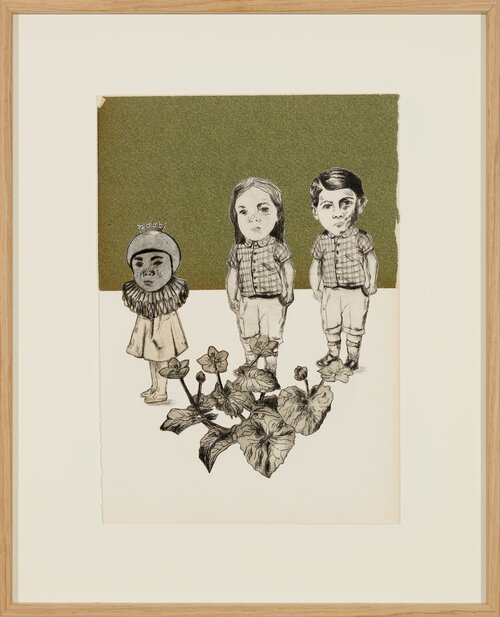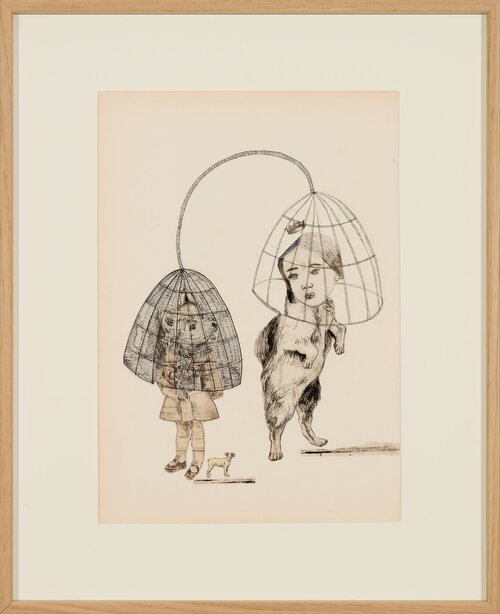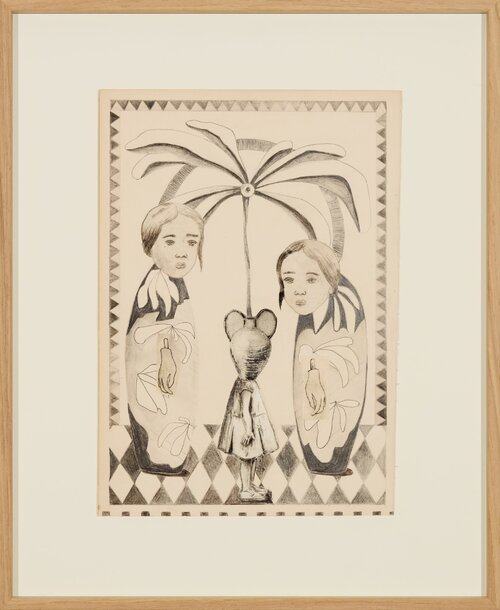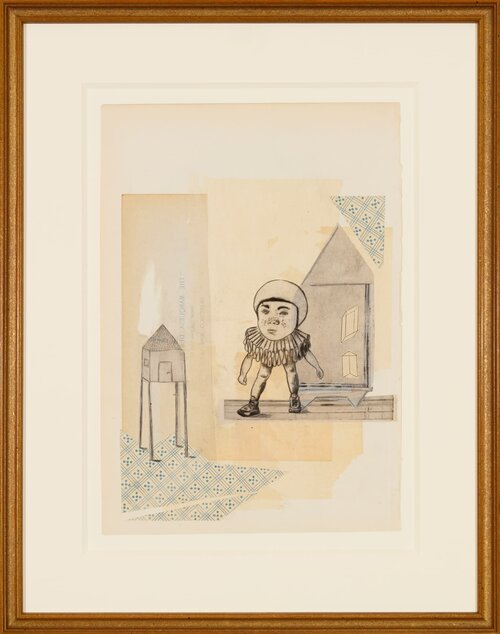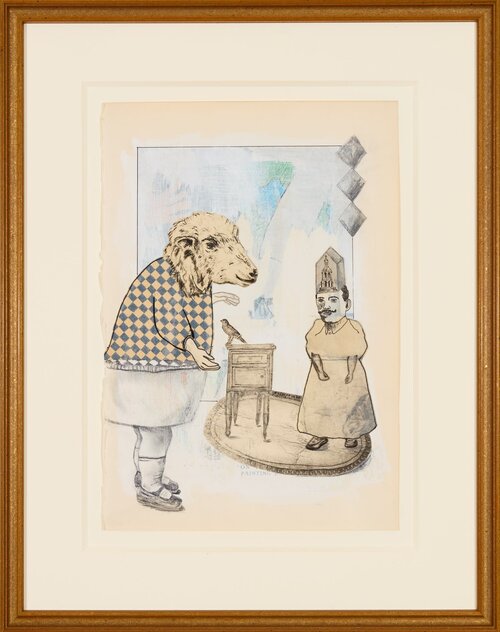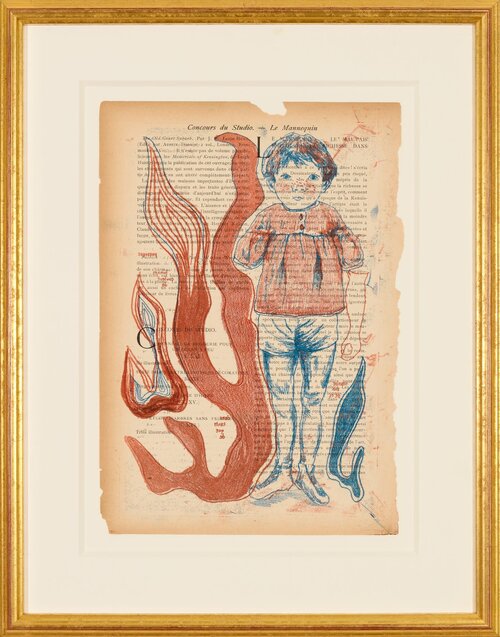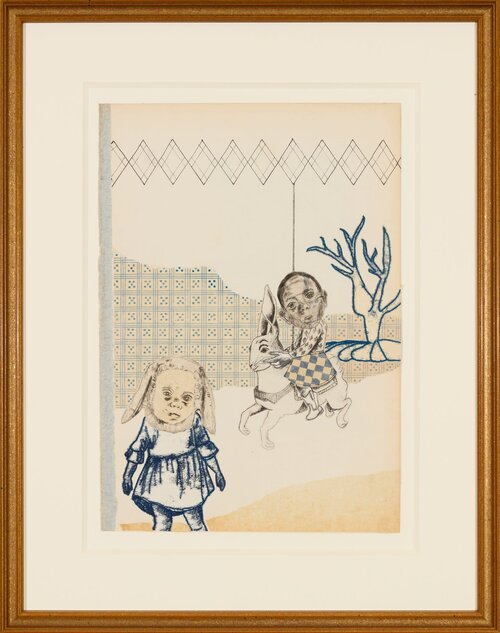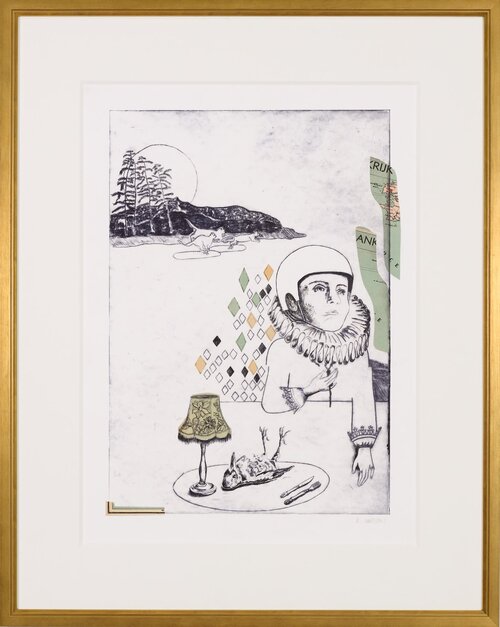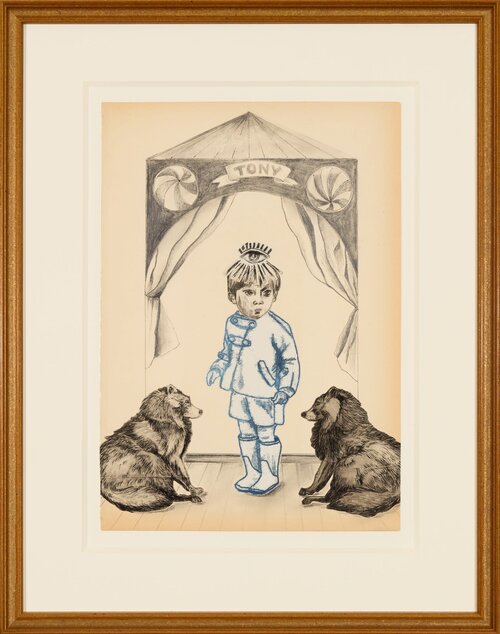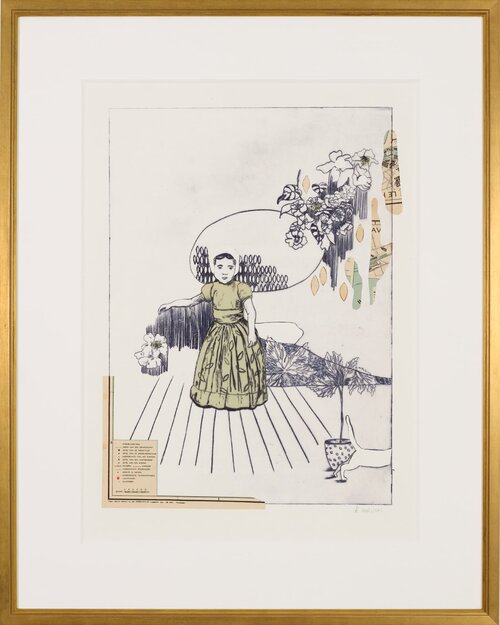
Kristel Naessens
Belgium (1968)Through her often somewhat absurd collages, Kristel Naessens (b. 1968, lives and works in Belgium) takes her viewers into a dreamy world. Guided by her intuition, she combines her detailed illustrations in ink or graphite pencil with graphic printing techniques such as linocuts, monotypes or the drypoint technique. In that process, technicality and craftsmanship, or being hands-on and creating imaginary worlds go hand in hand. From her love of melancholy and the fragility of old documents, she likes to work on paper from old books or magazines. Although she wants to give the viewer the freedom to create their own story, thematic threads that recur include children or man's hierarchical relationship to the planet. The ambiguous figures between humans and animals make the seemingly lovely scenes feel uncomfortable and alienating at the same time.
'I also make imaginative drawings, which I then cut up and integrate as separate elements into different works. I have boxes full of material waiting. While I used to sometimes be guided by a story or poem when doing this, I now purely and simply proceed on my intuition. I love to build up the image in layers with different kinds of fine paper, to give space to the unexpected and thus gradually see something grow. Sometimes a story emerges by chance, sometimes there is no direct connection between the different elements. I particularly enjoy creating my own dream world and at the same time want to leave room for the viewer to make up his own story and immerse himself completely in the work,' Naessens says.
Between man and animal
As an additional atmospheric framework for her drawings in a muted colour palette, Kristel Naessens likes to use paper from old books that clearly date from another time - such as a Larousse encyclopaedia from the 1930s or the patron magazine Burda's from the 1960s, or she prepares her paper. The medium determines not only the format, but also the background. 'I am an avid observer, and like to rummage through books or among old paper for inspiration. I love the melancholic atmosphere and fragility of those old documents. Although I also find it very fascinating to delve more deeply into flora and fauna, so a walk inspires me every time,' Naessens says.
'I also look up to the direct, often black-and-white portraits of Marlene Dumas, the magical realist works of Paula Rego or the way Kiki Smith and William Kentridge, among others, integrate graphics into their work. I love the fragility in Smith's work, and share her interest in nature.' Although the viewer is given free rein to interpret the work, some elements recur regularly as a common thread. For instance, children often occupy a prominent place, and the artist asks questions about how we as humans view our planet.
'I like to question the hierarchical structure where humans are at the very top. This is one of the reasons why composite beings often appear in my scenes: a human with animal legs or a pigeon with llama ears. I look for what makes humans human, and give animals a prominent place. Although my scenes seem lovely at first glance, this makes them feel uncomfortable and alienating at the same time.'
